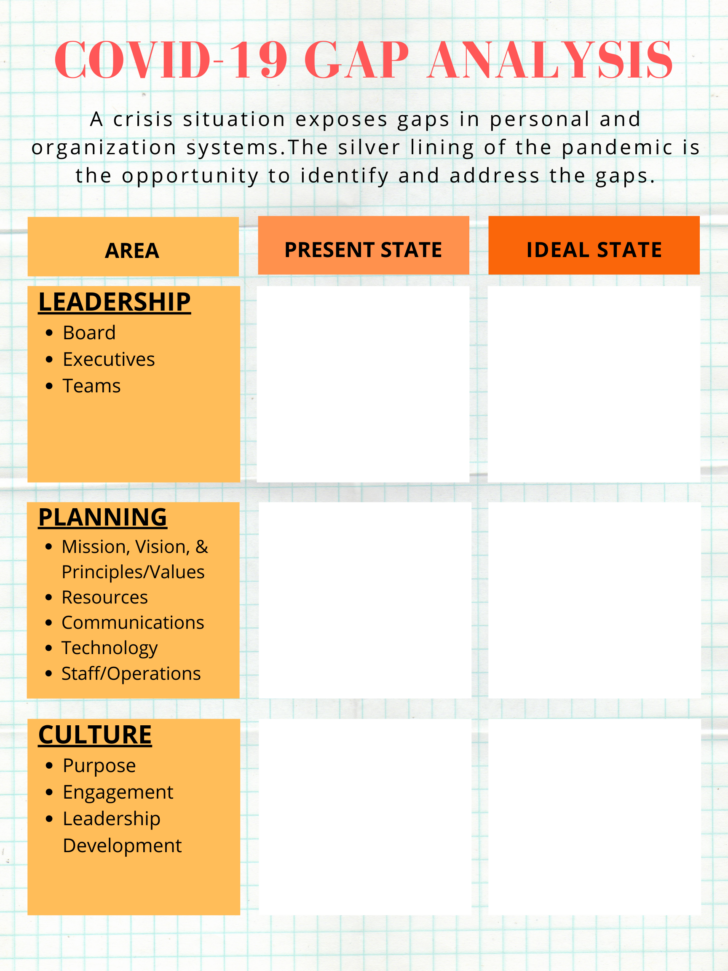Responsive Planning: How To Come Out Ahead in a Pandemic
The pandemic is exposing tremendous gaps in our teams, our organizations, and our society. And, to be honest, in each of us.
As consultants, we hear clients expressing vulnerability about what they’re experiencing in their organizations. New ways of thinking and acting are emerging while we continue to feel concerned about how we will meet the basic needs of our teams, organizations, and communities.
How can we move forward purposefully in the face of our gaps and any lack of preparedness? How do we lead our staff, our boards, donors, volunteers, and other stakeholders with vision, relevance, and principle-based leadership?
Here is what we advise leaders to do: lead your organization with responsive planning.
Responsive planning has five steps:
- Complete a gap analysis (see below) to identify your strengths and weaknesses and map out the ideal standard in each area (leadership, planning, and culture).
- Create a plan to address these gaps, including developing priorities and action steps.
- Share the plan with internal stakeholders and seek their perspectives.
- Once the plan is determined, communicate the plan with external stakeholders
- Begin to implement and continue to monitor the external environment, adjusting your plan in real-time.
The benefits of responsive planning are immediate and long-term. Taking this approach increases your organization’s capacity to adapt to changing circumstances, real-time. By understanding the situational landscape and facing issues and threats head-on, you provide security for yourself, your team, board, and other key stakeholders. In the long term, responsive planning ensures your organization navigates through crises in a way that will serve as a model for future planning and strategy.
Use our template (available here) in consultation with your brain trust to help identify and create the systems and resources to support you and your organization through the COVID-19 crisis and beyond
To get started, consider the following questions for each of the areas:
Present State: What can you name about your current situation? Remember: stick with the facts, rather than stories.
You may write down statements like:
- Board has not met to create a revised strategy in response to the pandemic.
- Staff members are dropping deadlines and missing team meetings.
- Mission is highly relevant and our work is in more demand than ever.
- Cash is sufficient to carry expenses through July 2020.
Ideal State: What is your ideal for this area or situation? Remember: think about what you’d really like to make happen, don’t be limited by existing ways of doing things.
You may write down statements like:
- Board executive committee and leadership team meet weekly to create a responsive plan
- Staff members are aware of what each other is doing and what their individual concerns are. They update each other with daily check-in’s and discuss mission-related wins and areas where they need support.
- Clients report a high level of satisfaction.
- Fundraising events shift to online and meet or exceed revenue goals.
To learn more about creating a response plan for your organization, contact Jacki Davidoff to set up a 20-minute conversation.






